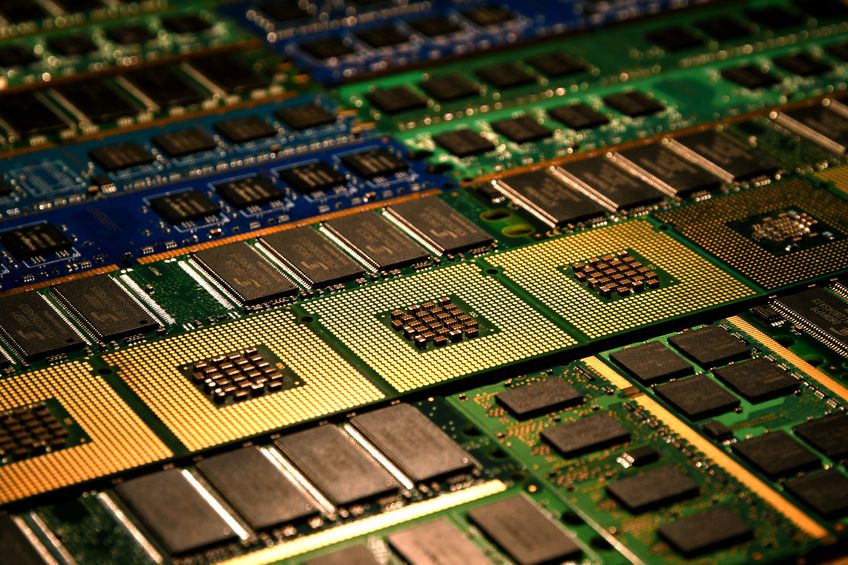According to the DRAMeXchange survey conducted by Jibang Consulting Semiconductor Research Center, DRAM quotations began to reverse in the fourth quarter of 2018, causing the overall industry revenue of DRAM to decline. Due to the generally high inventory level on the demand side, the purchasing power is weak, which in turn causes the DRAM supplier's sales bit to show a large quarterly recession. Under the pressure of falling prices, the total DRAM revenue in the fourth quarter of 2018 fell by 18.3% from the previous quarter.
DRAMeXchange pointed out that the contract price in January 2019 continued to fall. In terms of pricing of first-line PC-OEM manufacturers, the average price of mainstream 8GB modules has slipped to US$50 in January, and in February and March, under the condition of monthly deal, prices continue to drop, and the overall estimate is estimated. The first quarter fell about 20-25%. In addition, the production bits of DRAM suppliers in the fourth quarter of 2018 are much higher than the bit-order shipments, resulting in increased inventory pressure. Therefore, in order to accelerate the destocking, manufacturers will be more active in the quotation strategy.
From the perspective of revenue, manufacturers are generally unable to escape the fate of the quarterly recession. Under the impact of server memory shipments, Samsung, the industry leader, saw the largest decline in the fourth quarter of the three major factories, revenue fell 25.7% from the previous quarter, to 9.45 billion US dollars, the market share fell to 41.3 %. SK Hynix's position shipments only fell by about 2%, so the revenue decline was slightly lower than Samsung's, with a quarterly decrease of 12.3% to 7.14 billion US dollars, the market share exceeded 30% to 31.2%.
Micron still maintained its third position. With the help of a more flexible shipping strategy, revenues reached US$5.37 billion. Although it fell 9.2% from the previous quarter, it performed best in the three major factories, and its market share rose to 23.5%.
DRAMeXchange estimates that in the face of the obvious erosion of the market and the relatively high inventory level, Samsung will be more active in the quotation strategy in the future, to avoid the continued compression of the market.
Observing the profitability of the original factory, the fourth quarter of 2018 was affected by the overall price decline, the supplier's profit high point officially ended, and the operating profit rate showed a decline. The leading factory Samsung has the least power to sell at a reduced price, and the proportion of 1Ynm has gradually increased, and the operating profit ratio has only dropped from 70% in the previous quarter to 66%. However, even if the offer reversed in the fourth quarter, the gross profit margin of the production DRAM is still around 80%, indicating that Samsung still has the capital to do a more aggressive price strategy.
SK hynix's fourth-quarter shipments were high, and the price was eroded by profitability. The operating profit ratio for the quarter fell from 66% in the third quarter to 58%. Micron is due to the company's financial report for the month of September-November, the price decline is not as clear as the October-December settlement of the Korean factory, so the operating profit rate only fell from 62% in the previous quarter to 58%.
Looking forward to the first quarter of 2019, the original profit-making space will be further compressed in the case of more severe declines in industrial prices.
From the technical point of view, with the addition of Line 17 and the DRAM production capacity of the second floor of Pyeongtaek Plant, Samsung has reached the target of 70% of the total output of 1X+1Ynm at the end of last year. Although the Pingze plant plans to no longer increase the amount of film cast this year, Line 17 and the second floor of Pyeongtaek Plant will continue to convert 1Ynm. In order to comply with the current market conditions, the conversion speed is not fast.
As for SK Hynix, the 1Xnm yield is on track, and the second 12-inch factory in Wuxi, China, has also begun to contribute output in the first half of this year. However, due to the impact of global economic uncertainty, the progress of the expansion of Wuxi plant will not be too positive.
In terms of Micron, Taiwan Micron Memory (formerly Ruijing) has been produced in 1Xnm, and the next step will be directly transferred to 1Znm, but the actual contribution will fall in 2020; Taiwan Micron Wafer Technology (formerly Huaya Branch) was last year. In the second quarter, the conversion from 20nm to 1Xnm will be transferred to 1Ynm in the first half of this year, and the proportion will be gradually increased.
In the Taiwanese manufacturers, the fourth quarter of South Asia was affected by the poor standard market conditions. The shipments fell by more than 20%, and the revenue performance was down by 30.8% from the previous quarter. The better proportion of gross profit DDR4 products shipped, coupled with the overall industry quotation down, the operating profit ratio fell from 41.0% in the previous quarter to 41.8%. In the case of increased depreciation and amortization of plant equipment, and the cost-effectiveness of 20nm, the profitability will continue to shrink.
In terms of Powerchip Technology, its DRAM revenue grew 10.3% from the previous quarter. If it covers the DRAM foundry business, revenue will fall nearly double digits. As for Winbond's DRAM revenue fell 16.8%, product prices fell less than 5%, but the shipments were still reduced by more than 10% due to weak overall cargo momentum.


